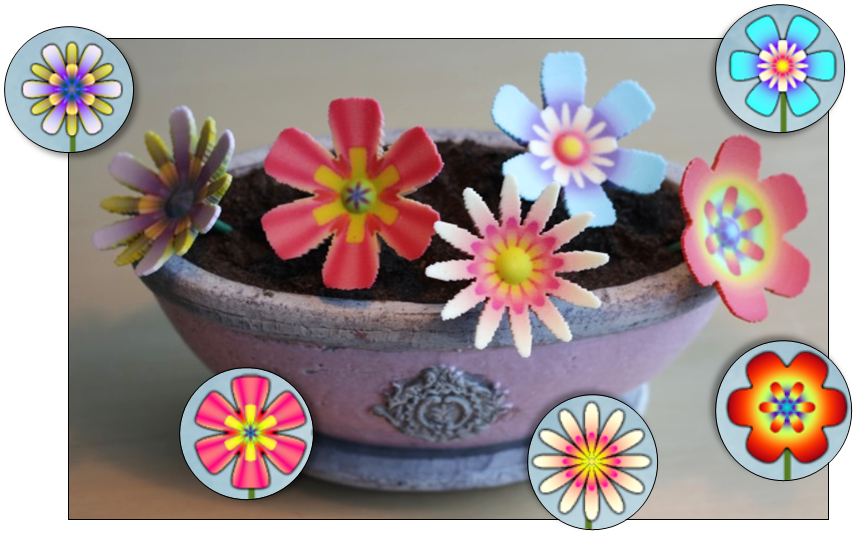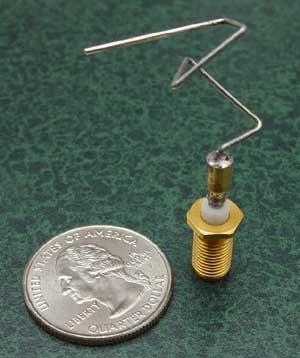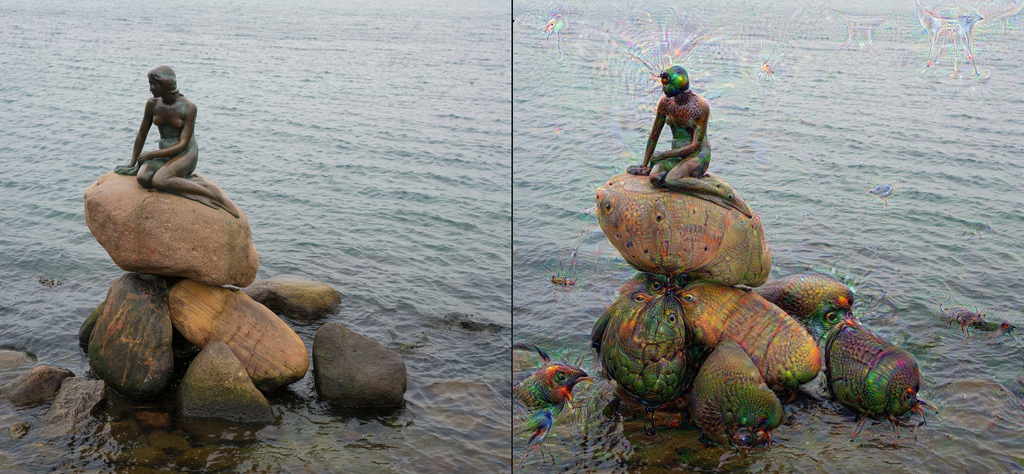Creative machines: The next frontier for artificial intelligence
Artificial intelligence can solve routine tasks but still struggles to be creative or collaborate with us.
Digital Design DepartmentEducationartificial intelligence
Written 2 May, 2016 11:30 by Vibeke Arildsen
By Joel Lehman, Assitant Professor, and Sebastian Risi, Associate Professor, IT University of Copenhagen
Imagine if machines were as creative and as collaborative as humans. By working together with a creative computer intelligence, you might produce a beautiful piece of art in only a few hours. But even though artificial intelligence keeps improving, this dream is still far away. It turns out that teaching computer programs to play chess is much easier than teaching them to help us write symphonies.
The current state of AI
AI is in a boom. Companies like Google and Facebook have been buying up AI startups, hoping to use them to sell more ads or improve search. One startup called “Deep Mind” sold for half a billion dollars, and Uber recently hired away 40 researchers from Carnegie Mellon, a major US university, leaving their AI department crippled.
A main reason for all this interest is a new technique called “deep learning” (see infobox). The principle behind this form of artificial intelligence is to use examples of correct behavior to teach simulated brains how to to solve problems. Deep learning works best if there are a huge number of examples to learn from, and because we live in the era of “big data,” this often isn’t a huge obstacle. But while deep learning has been successful in solving many problems (like recognizing faces in images or recognizing speech in audio), creativity and collaboration are different. There’s no big data for creativity, because to be creative is to make something new. So it’s a unique challenge for artificial intelligence.
Can machines be creative?
Computer programs, or rather, the algorithms underlying them, are lists of instructions, just like recipes. So you might doubt that creative machines can exist. A recipe for creativity sounds impossible, because how can a recipe make something new each time it’s followed? But it turns out that a powerful creative recipe is hiding in plain sight. If you take a quick glance out of the nearest window, you might notice trees, plants, and birds. Everything alive is a product of evolution, which is at heart a simple creative recipe.
 Figure 1: A product of novelty search (from Lehman and Stanley 2012) © 2012 Mit PressEvolution tries out new variations of living things, and only some of those variations survive. This idea is called natural selection. Over many generations, natural selection leads evolution to invent strange and wonderful solutions to the problems of life. There’s the bombardier beetle that squirts explosive chemicals to repel its predators, or microbes that somehow survive in volcanos or under arctic ice. Key to the evolutionary recipe are reproduction and natural selection. And there’s no reason that these ingredients can’t be programmed into a computer.
Figure 1: A product of novelty search (from Lehman and Stanley 2012) © 2012 Mit PressEvolution tries out new variations of living things, and only some of those variations survive. This idea is called natural selection. Over many generations, natural selection leads evolution to invent strange and wonderful solutions to the problems of life. There’s the bombardier beetle that squirts explosive chemicals to repel its predators, or microbes that somehow survive in volcanos or under arctic ice. Key to the evolutionary recipe are reproduction and natural selection. And there’s no reason that these ingredients can’t be programmed into a computer.
From this inspiration, researchers in artificial intelligence have designed evolutionary algorithms, programs that can invent new solutions by simulating evolution (see infobox at the bottom of the page). And that’s just the tip of the iceberg -- researchers have since invented many other creative algorithms, some inspired by human learning, some by how particular artists create their work, and there are many other algorithms still waiting to be invented. For example, one recent algorithm is novelty search, which simply tries to find things unlike what it has discovered so far[VA1] . When applied to discover novel images, it creates interesting pictures, as seen in Figure 1.
Towards more creative AI
 Figure 2: In the Petalz game, players can breed an unlimited variety of different flowers and transfer them to the real world via 3D printing. © IEEEAs big data tasks become easier for AI to solve, the challenges of computerized creativity become more exciting. Submissions to the International Conference for Computational Creativity (ICCC) are at record highs, and modern video games often use creative algorithms to invent new levels, creatures, or even artificial flowers (figure 2). These techniques are increasingly a selling point for some commercial games. For example, there’s the highly anticipated title No Man’s Sky, which generates a massive universe of planets, each one inhabited by unique creatures.
Figure 2: In the Petalz game, players can breed an unlimited variety of different flowers and transfer them to the real world via 3D printing. © IEEEAs big data tasks become easier for AI to solve, the challenges of computerized creativity become more exciting. Submissions to the International Conference for Computational Creativity (ICCC) are at record highs, and modern video games often use creative algorithms to invent new levels, creatures, or even artificial flowers (figure 2). These techniques are increasingly a selling point for some commercial games. For example, there’s the highly anticipated title No Man’s Sky, which generates a massive universe of planets, each one inhabited by unique creatures.
Creating game content automatically is known as Procedural Content Generation, which is a research area in which Danish researchers are pushing the boundaries. For example, researchers from the IT University of Copenhagen, Aalborg University Copenhagen and New York University wrote the first textbook for this new area and continue to invent new approaches, like games built entirely by computers and games driven by data taken from Wikipedia or other massive public databases.
 Figure 3: The 2006 NASA ST5 spacecraft antenna. NASA Evolvable Systems Group. (Image is in the public domain)Beyond games, computers are beginning to compose music by themselves, and can even create interesting paintings. For example, Google scientists have created a program called Deep Dream that makes a simulated brain hallucinate, resulting in surreal, psychedelic images. Others have created programs that can paint any image in the style of another one, so it’s easy to change your selfie into the style of Van Gogh. Creative algorithms have even produced things that have rocketed into outer space: An evolutionary algorithm invented radio antennas put onto a satellite, because they worked better than antennas designed by humans (Figure 3).
Figure 3: The 2006 NASA ST5 spacecraft antenna. NASA Evolvable Systems Group. (Image is in the public domain)Beyond games, computers are beginning to compose music by themselves, and can even create interesting paintings. For example, Google scientists have created a program called Deep Dream that makes a simulated brain hallucinate, resulting in surreal, psychedelic images. Others have created programs that can paint any image in the style of another one, so it’s easy to change your selfie into the style of Van Gogh. Creative algorithms have even produced things that have rocketed into outer space: An evolutionary algorithm invented radio antennas put onto a satellite, because they worked better than antennas designed by humans (Figure 3).
One interesting side-effect of making creative machines is that we might gain new insight into the nature of human creativity and innovation, which is often surrounded by an aura of reverence and mystery. For example, trying to design inventive robots led Jurgen Schmidhuber to a new theory of creativity and fun, and the recent popular science book Why Greatness Cannot be Planned was inspired by research into creative algorithms.
AI for helping human creativity
There are also researchers studying how to design machines that help us to be more creative. For example, even if you don’t know how to draw, you can point to images you find interesting. By putting humans at the center of an evolutionary algorithm, humans can breed art or objects to become more pleasing, in the same way we breed dogs or horses. Other algorithms help video game designers to create new levels by filling in details or making sure that the level is playable or challenging. The idea is that computers can help us do things we might not otherwise be able to, and come up with new ideas that can propel our creativity forward.
A Brighter Vision
One mistaken vision of AI’s future is seen in the movie “The Terminator,” where AI-gone-wrong aims to destroy humanity. But creative, collaborative AI helps us to see the real world possibilities for much brighter outcomes. By collaborating together, teams of humans and creative machines can accomplish much more than either could working alone. Delicate human intuition can complement the powerful number-crunching of computers, freeing us humans to do what we do best. In the end, the hope is that powerful artificial intelligence will lead not to a sci-fi dystopia, but to a happy and productive union between man and machine.

Google has developed Deep Dream, a program that makes an artificial brain hallucinate and create surreal images. (Photo: Dion Hinchcliffe).
INFO: Deep learning
Deep learning is an artificial intelligence technique for training simulated brains, called artificial neural networks. While similar algorithms have existed for a long time, only recently has it been possible to train networks with many layers of simulated neurons (called deep networks). Two main advances making deep learning possible are faster computers and big data.
The most popular way to train a deep network is through supervised learning, where you have a big collection of correct behavior. For example, if you wanted to train a deep network to recognize objects in images, you might find millions of images of objects and label each image by what object it is of.
A training algorithm feeds each example into the deep network, one by one, and the network produces a label, representing what it thinks is in the image. If the network produces the wrong label, then the training algorithm supervises the deep network, nudging the network towards the correct label by slightly changing the connections between neurons.
Deep learning has broken records in many benchmark tasks, and has spurred huge business interest, but is not easy to apply to problems requiring creativity.
INFO: Evolutionary algorithms
Evolutionary algorithms are computer programs that simulate evolution in a computer. One application of these algorithms is to evolve computer artwork, like pictures or music.
Just as biological evolution depends on DNA to represent the blueprint for making an organism, evolutionary algorithms have artificial DNA, some sequence of bits (1s and 0s) that represents how to construct something, like an image or a song. You kick-start the algorithm with a collection of random artificial DNA.
Next, you test the quality of what each artificial DNA represents. For example, a human could rate songs by how pleasing she finds them, or a computer could rate images by which ones are most different from the ones it has bred in the past.
Then, you make copies of the best ones, which is like survival of the fittest. But rather than make exact copies, you purposefully flip a few random bits (for example, from a 0 to a 1), like mutation in biology. The idea is that some of these “mistakes” will actually be improvements on the original.
By repeatedly creating variations of the best artificial DNA, the algorithm can automatically learn and create new things, sometimes in collaboration with humans.
Vibeke Arildsen, Press Officer, phone 2555 0447, email viar@itu.dk
Sebastian Risi, Professor, email sebr@itu.dk
Joel Lehman, Assistant Professor, email jleh@itu.dk